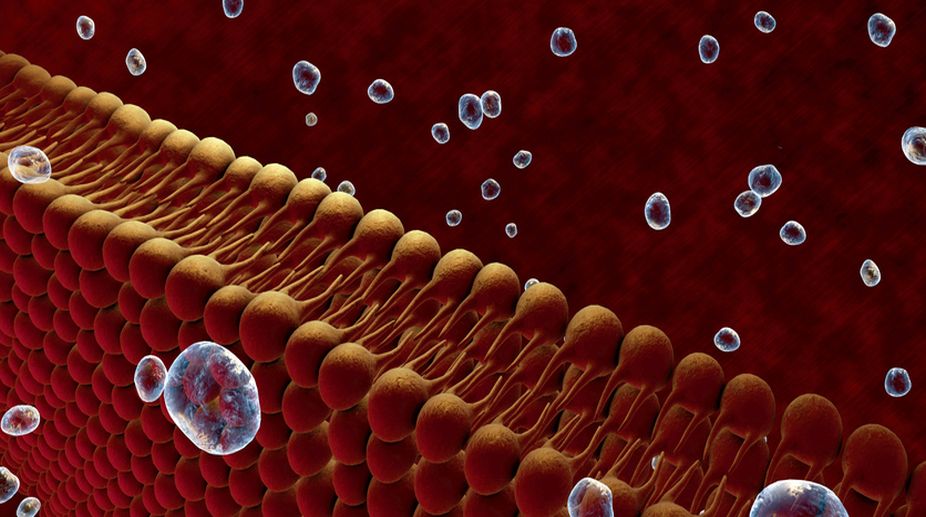The biosynthesis of lipids and their fates within eukaryotic cells reveal that the endoplasmic reticulum is the primary source of membrane lipids including phospholipids and cholesterol. Indeed, most of the enzymes required for the biosynthesis of the various membrane phospholipids are found nowhere else in the cell.
There are, however, important exceptions. For example, while mitochondria import from the ER all of the phosphatidylcholine, phosphatidyl inositol, and phosphatidylserine found in their exterior and interior membranes, they acquire phosphatidylethanolamine indirectly by decarboxylating imported phosphatidylserine. Other significant exceptions are the biosynthesis of cholesterol and dolichol by peroxisomal enzymes and the synthesis of chloroplast-specific lipids in the chloroplast.
Biosynthesis of phospholipid molecules is restricted to one monolayer of the ER membrane. Specifically, the active sites of the enzymes involved are exposed to the cytosol, and newly synthesised lipids are incorporated into the monolayer of the membrane that faces the cytosol. Cellular membranes, of course, are phospholipid bilayers, with phospholipids distributed to both sides. Thus, there must be a mechanism for transferring phospholipids from one layer of the membrane to the other. Because it is thermodynamically unfavourable for phospholipids to spontaneously flip at a significant rate from one side of a bi-layer to the other, transfer depends on phospholipid translocators, or flippases, which catalyse the translocation of phospholipids through ER membranes.
Phospholipid translocators, like other enzymes, are quite specific and affect only the rate of a process. As a result, the precise phospholipid molecules transferred across a membrane depend on the complement of translocators available. Therefore, this translocator specificity contributes to the membrane asymmetry. For example, the ER membrane contains a translocator for phosphatidylcholine, but not for phosphatidylethanolamine, phosphatidylinositol, or phosphatidylserine. Consequently, phosphatidylcholine is found in both the cytosolic and lumenal layers of the ER membrane whereas the latter three phospholipids are confined to the cytosolic layer. When vesicles form from the ER membrane and fuse with other organelles of the endo-membrane system, the distinct compositions of the cytosolic and lumenal layers established in the ER are transferred to other cellular membranes.
Movement of phospholipids from the ER to a mitochondrion or chloroplast poses a unique problem. Unlike organelles of the endo-membrane system, mitochondria and chloroplasts do not grow by fusion with ER-derived vesicles. Instead, phospholipid exchange proteins (or phospholipid transfer proteins) found in the cytosol convey phospholipid molecules from the ER membrane to the outer mitochondrial and chloroplast membranes. Each exchange protein recognises a specific kind of phospholipid, removes it from one membrane, and carries it through the cytosol to another membrane. Such transfer proteins also contribute to the movement of phospholipids from the ER to other cellular membranes, including the plasma membrane.
Although the ER is the source of most membrane lipids, the compositions of other cellular membranes vary significantly from the composition of the ER membrane. For example, a striking feature of the plasma membrane of hepatocytes is the relatively low amount of phosphoglycerides and high amounts of cholesterol, sphingomyelin, and glycolipids an increasing gradient of cholesterol content from the ER through the compartments of the endo-membrane system to the plasma membrane. This correlates with an increasing gradient of membrane thickness. ER membranes are about five nm thick, whereas plasma membranes are about eight nm thick.
The writer is Associate Professor, Head, Department of Botany, Ananda Mohan College, Kolkata, and also fellow, Botanical Society of Bengal, and can be contacted AT tapanmaitra59@yahoo.co.in.






